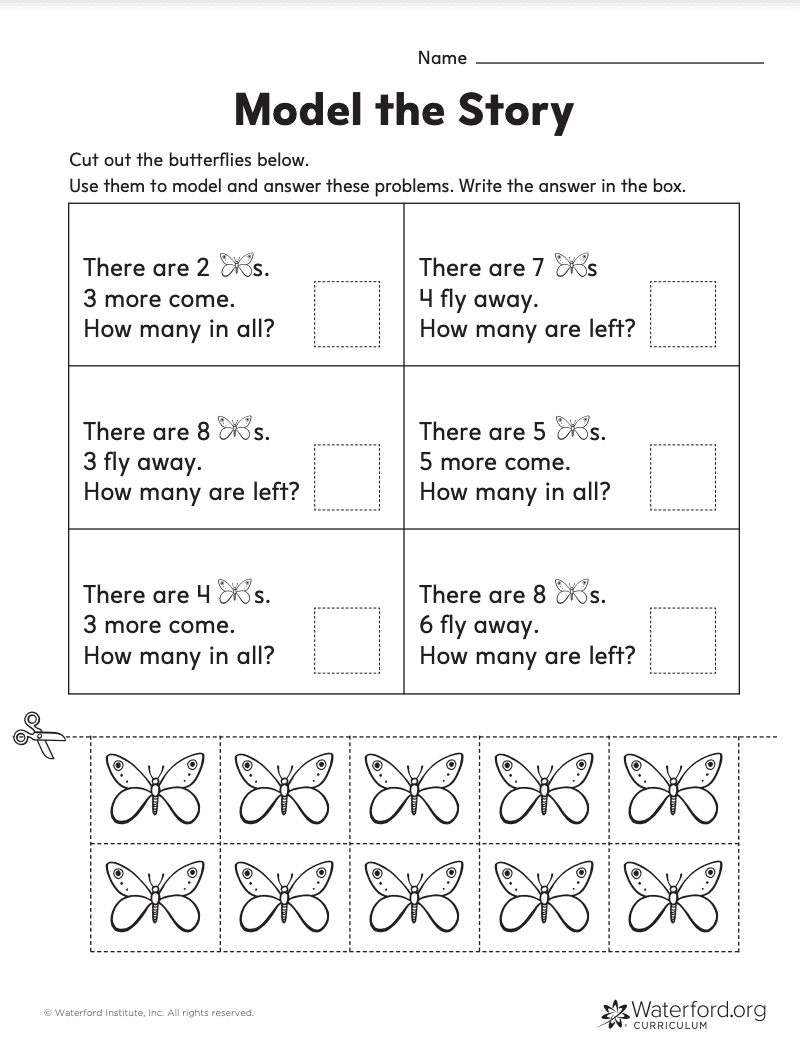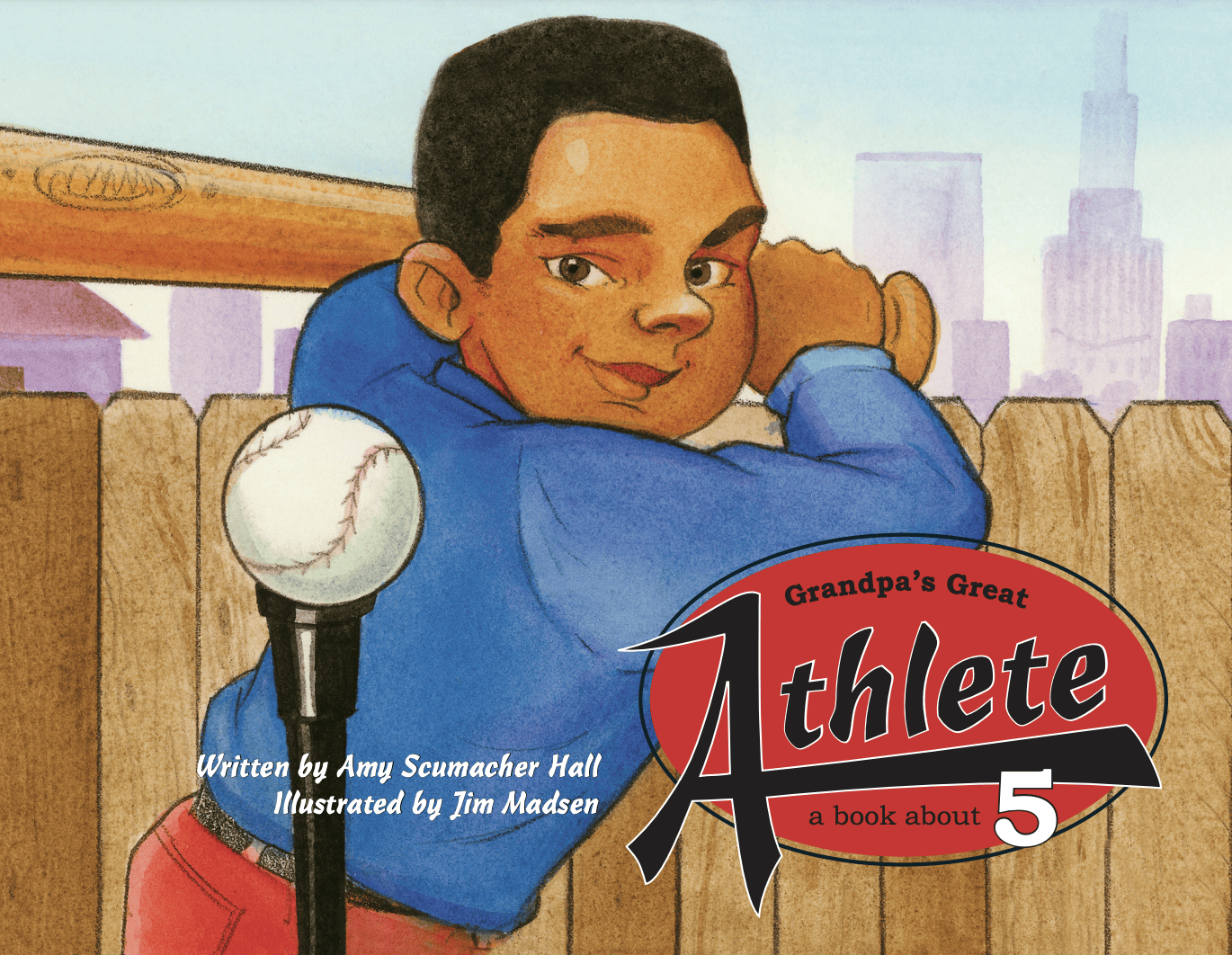Math and reading are often seen as separate subjects with little crossover between the two—which couldn’t be further from the truth. Practicing math skills can contribute to a student’s literacy development.
Likewise, a literacy curriculum can help PreK and early elementary students develop the reading comprehension skills they need to better understand concepts they encounter, including early childhood math concepts. In fact, math literacy—a strong understanding of math vocabulary, numbers, and processes—is an important foundational skill for elementary students.
As an educator, you can include some overlap between your math and reading curriculum and class activities to strengthen PreK, kindergarten, and early elementary students’ understanding of both. Read on to bring literacy strategies into math lessons in your classroom.
 1. Use story problems to reduce intimidation
1. Use story problems to reduce intimidation
Story problems give students an opportunity to practice their literacy and math skills simultaneously. They can be especially useful for teaching new math skills. Through relatable and engaging scenarios, story problems can help students feel less intimidated by math.
For example, this story problem math worksheet about butterflies can help students practice addition and subtraction.
2. Have your students keep math journals
Math journals are notebooks where students can brainstorm their answers to problems using words or visuals. They may also use the notebook to write out their explanation for their solutions.
These journals can help students solidify their understanding of math concepts by encouraging them to not only arrive at an answer but understand why that answer is correct. The freewriting and drawing element can also help students organize their thinking process and develop life-long learning habits as they solve a problem. And best of all, students can practice writing words and sentences along the way.
3. Teach communication skills through class discussions
Communication, both through writing and speaking, is a key literacy skill. Practicing speaking and listening skills contribute to stronger reading comprehension–and vice versa.
As you teach your students new math skills, take time for a classroom discussion so students can talk about what they’ve learned and practice together. You could provide a few example problems for them to solve as a class or put them into groups to practice solving problems together and discussing the solution.
4. Bring math vocabulary into your spelling tests
Include relevant math words you teach in class as part of your vocabulary banks or spelling tests. You can give students a refresher on what each concept means so they can use it more clearly as they solve problems and create explanations for their solutions. Share these vocabulary lists with families, too, so they can practice using the words in everyday life.
5. Choose STEM-themed books for classroom read-alouds
 Like story problems, picture books can make math fun and take the fear out of learning new concepts. You can also bring in STEM books (picture books that teach science and math skills) to incorporate science subjects you’re teaching, too.
Like story problems, picture books can make math fun and take the fear out of learning new concepts. You can also bring in STEM books (picture books that teach science and math skills) to incorporate science subjects you’re teaching, too.
Share STEM picture books from your local or school library with students, like Yasmin the Scientist by Saadia Faruqi or Rafa Counts on Papá by Joe Cepeda, to build math and literacy skills together.
You can also follow these links for free downloadable and printable STEM picture books:
- Defying Gravity: The Story of Mae Jemison (Spanish: Desafiando la gravedad: La historia de Mae Jemison)
- 9 Cat Night (Noche de 9 gatos)
- Bugs for Sale (Insectos a la venta)
- Grandpa’s Great Athlete: A Book about 5 (El gran atleta del abuelo: Un libro acerca del 5)
- Heads or Tails (Cara o Cruz)
6. Use songs and rhymes to teach math skills
Songs can teach students math skills like counting, addition, and subtraction while also strengthening their phonological awareness skills–the ability to hear and manipulate the sounds that make up language–which is a core part of literacy development.
As you teach your students math skills, share themed songs as a learning tool. You can find math songs and videos for PreK, kindergarten, and early elementary learners on the Waterford.org YouTube channel, including:
7. Share math-themed skits and reader’s theaters
Pair students into groups and share math-themed skits or dialogue worksheets to introduce or strengthen their understanding of new concepts. You can have your students present them to the class or just practice on their own. As students read and act out the math-themed reader’s theater, they will also practice reading fluency skills (reading aloud at an appropriate pace with good accuracy).
For more free math resources, share these 20 Early Math Activities for PreK and Kindergarten Students with families in your classroom.

